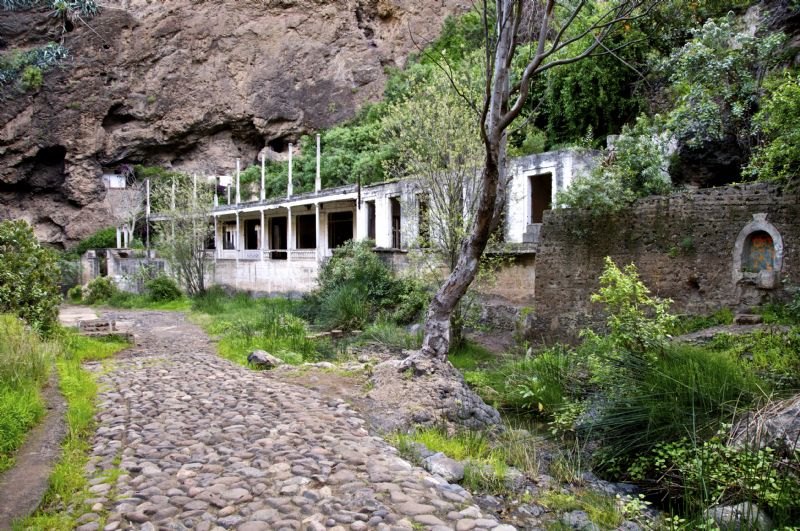 Azuaje ravine
Azuaje ravine
The GC-350 road leads from Firgas through the charming Barranco de Azuaje to Moya. Passing the bridge that connects the opposite walls of the gorge, you can bounce off the dirt road, which leads among the rocks to the ruined and deserted sanatorium Balneario de Azuaje. If anyone wants, he can leave his car there and walk up the beautiful and wild gorge.
Moya
Looking at the town of Moya from a distance, seems, that at any moment it will fall deep into the ravines, on the edge of which it arose. Because there is no such threat, it is worth going to Moya, to see the nice church of Nuestra Seńora de Candelaria. The observation deck behind the temple offers a beautiful view of the green canyon. One of Gran Canaria's most famous poets was born in the town – Thomas Morales, whose house, Tomas Morales House Museum, has been made available to visitors. Being in Moya, you must try the island's famous iced cookies – polished cakes.
Moya can be reached by buses #116 i 117 z Las Palmas de Gran Canaria. Information about the town and the surrounding area can be obtained from the tourist information office.
The GC-700 road leads from Moya into the gorge, in which the tertiary laurel forest has been preserved, Los Tiles Nature Reserve.
Santa Maria de Guia
A town right next to the highway, known to the people of Gran Canaria as Guia, It is famous for producing a perfect-tasting flower cheese (flower cheese) and characteristic knives with inlaid metal handles and impressive blades. Among the noteworthy buildings of the pretty old town are the 17th-century Iglesia de Asunsión with a neoclassical façade and two side towers, and beautifully restored traditional tenement houses.
The town can be reached by buses #100, 103 i 105 z Las Palmas de Gran Canaria. There is a tour desk on site.
Fresh fish is served at the San Felipe restaurant in the church square. Countryside lovers can rent Casa Rural Los Escobones 3 km south of the town.
Monastery of Valerón
Not all 2 km southwest of Santa Maria de Guia, the Cenobio de Valerón archaeological site is of interest by the GC-291 road. More than 300 caves carved in the rock, connected by passages and stairs, most probably once served as a huge granary, where the Guanches kept their crops.
boiler
Driving on the highway, the city of Galdar is hard to miss, which climbs the slopes of the cinnamon hill. Fniasteczko looks even more beautiful at night, when it appears, that orange fireflies swarmed the hill. Galdar arose in place, where the Guanches once lived – it is known about this thanks to the accidentally found cave decorated with drawings undeciphered to this day and the ruins of houses, which can be seen at the Museo y Parque Arqueológico Cueva Pintada.
During the visit, an interesting film made in 3D technology is watched, which presents the history of the conquest of Gran Canaria from the perspective of Princess Guanche Arminda. You can also enter several round stone houses, being reconstructions of the original houses of the first settlers of Gran Canaria.
The nice main square of the town is worth visiting, next to which stands the neoclassical Iglesia de Santiago de los Caballeros, and also visit the historic Ayuntamiento - in the inner patio grows the oldest drago tree on the island.
It is worth coming to the town on Thursday morning, when a colorful market takes place in the market square and nearby streets.
The city tourist information office is hidden on the ground floor of the former town hall. You can reach Galdar by bus #105 z Las Palmas de Gran Canaria. There are several nice cafes at the market square; visit to Heladeria Galdar, where you can try gofio ice cream, it is simply obligatory.